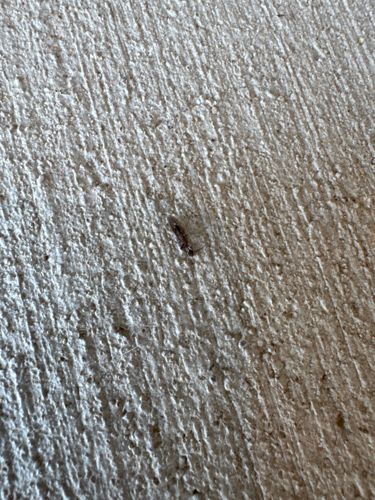Millipede
Scientific Name: Class: Diplopoda (specific species is difficult to determine from the image)
Order & Family: Order: Diplopoda (not an order and family, but the class of millipedes, as identifying the exact order/family from this image is difficult)
Size: Typically from 2 mm to over 35 cm (though most common North American species are between 2-10 cm).

Natural Habitat
Damp, dark environments rich in decaying organic matter, such as under rocks, logs, leaf litter, and in soil. They can often be found in gardens, forests, and sometimes in basements or other moist areas of homes, especially after heavy rains.
Diet & Feeding
Mainly detritivores, feeding on decaying organic matter such as leaves, wood, and other plant debris. Some species may also consume fungi or small amounts of fresh plant material.
Behavior Patterns
Millipedes are primarily nocturnal and prefer dark, damp places. They move slowly, with a wave-like motion of their many legs. When threatened, they often curl into a tight coil to protect their softer undersides, or they may secrete a foul-smelling liquid as a defense mechanism.
Risks & Benefits
Millipedes are generally harmless to humans and do not bite or sting. Some species can secrete irritating fluids that may cause minor skin irritation or discoloration, especially if handled. They are beneficial in ecosystems as decomposers, helping to break down organic matter and enrich soil.
Identified on: 8/10/2025